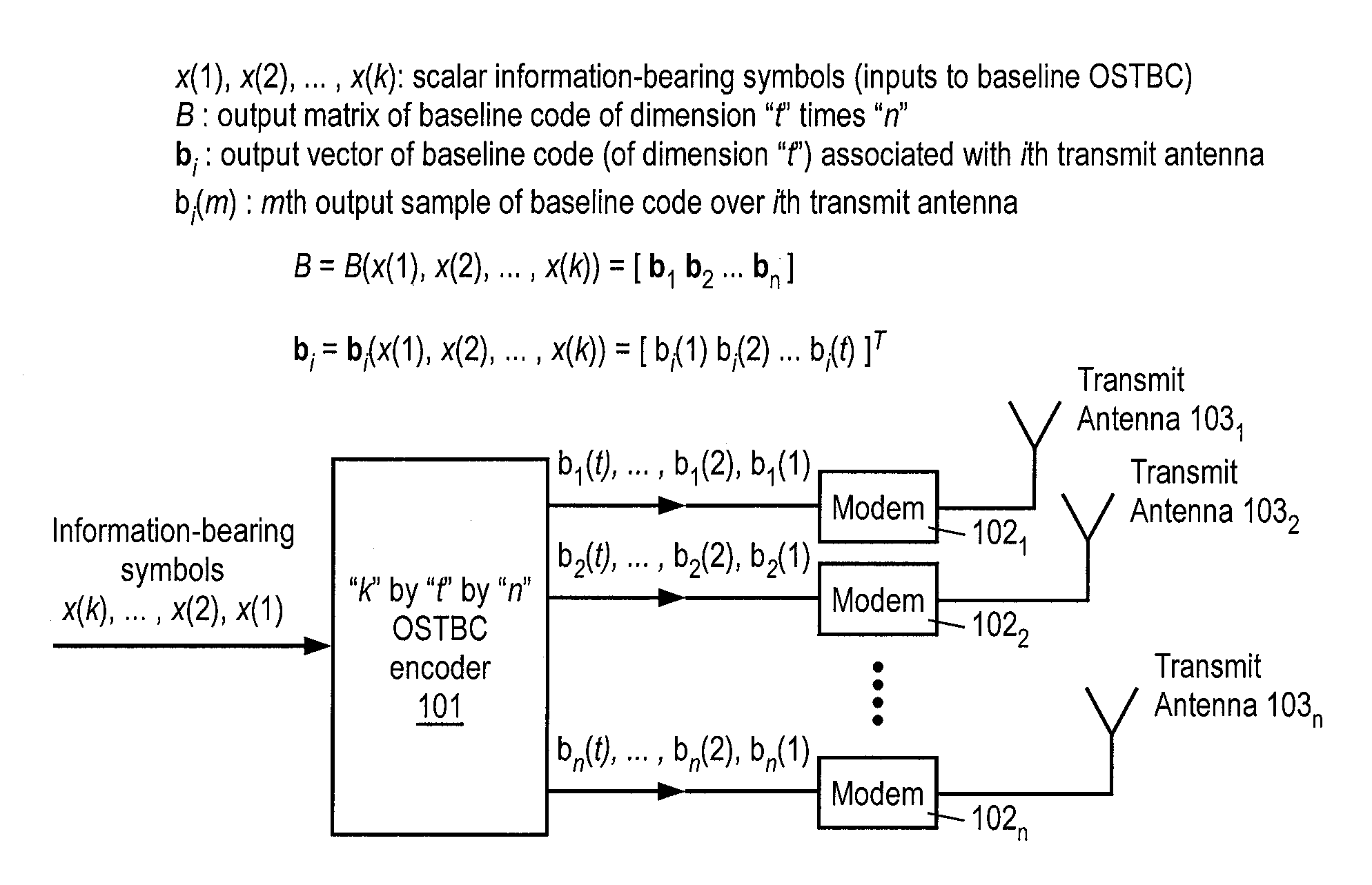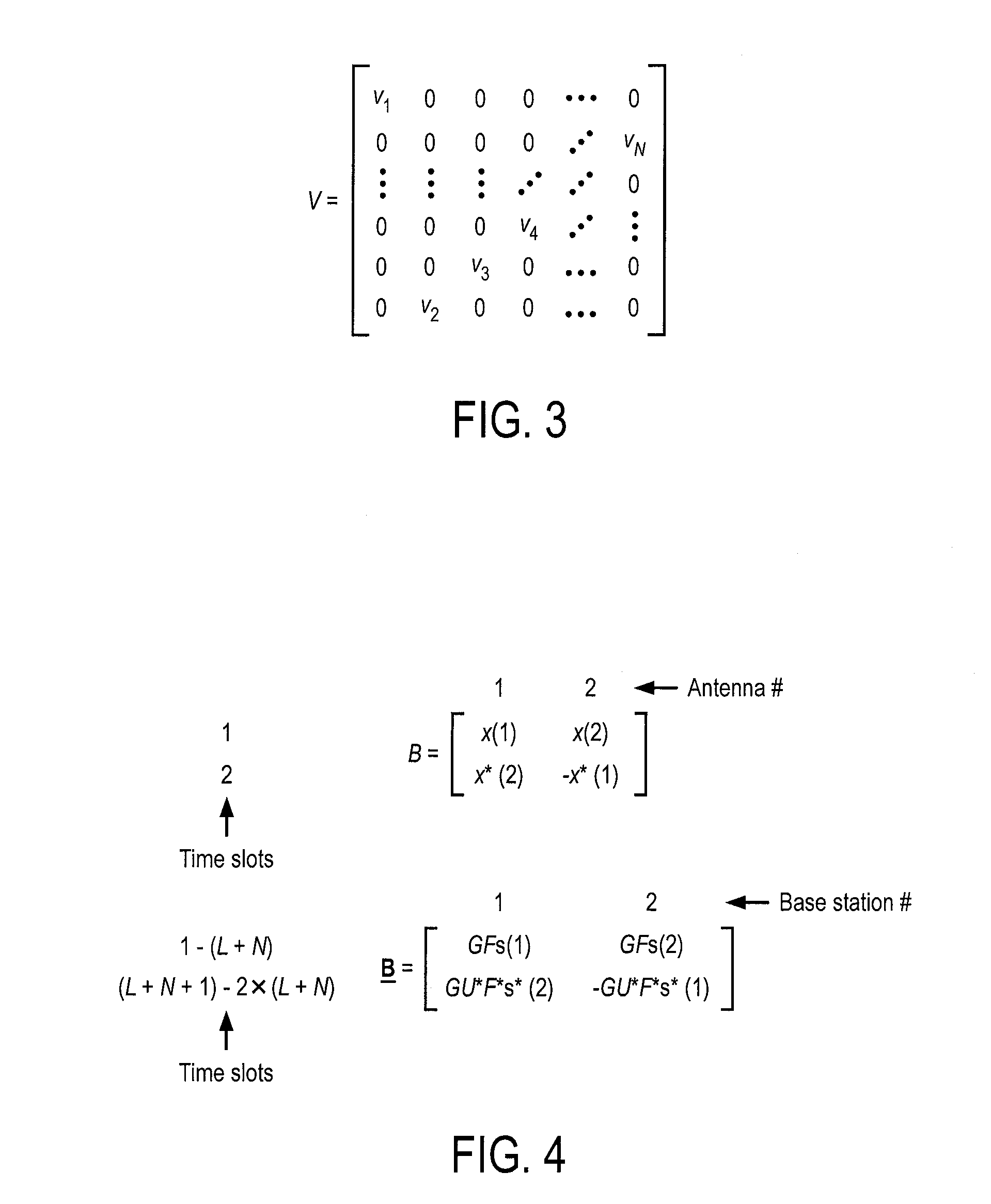Method and apparatus for asynchronous space-time coded transmission from multiple base stations over wireless radio networks
a wireless radio network and code transmission technology, applied in the field of wireless communication, can solve the problems of not knowing (and therefore not being able to adjust for) the time-synchronization between the transmissions from different base stations to the receiver, and the receiver with distinct relative delays with on
- Summary
- Abstract
- Description
- Claims
- Application Information
AI Technical Summary
Benefits of technology
Problems solved by technology
Method used
Image
Examples
Embodiment Construction
[0024]Methods and apparatuses for transmitting an information-bearing stream of symbols from multiple base stations to one or more designated mobile receivers are disclosed. In one embodiment, the transmission is achieved by using a space-time block code across all transmitting base stations. A space-time block code is a block-by-block encoding and transmission method in which each block of information symbols to be transmitted by a base station is encoded into a base station specific block of samples for transmission. In one embodiment, the space-time codes allow data decoding at any mobile, even in the case that the signals transmitted by distinct base stations are received at the mobile asynchronously, i.e., relatively delayed with respect to one another.
[0025]Codes disclosed herein can be readily employed as an inner code component of a more elaborate encoding system, designed to harvest other available forms of diversity.
[0026]Techniques described herein include, but are not li...
PUM
 Login to View More
Login to View More Abstract
Description
Claims
Application Information
 Login to View More
Login to View More - R&D
- Intellectual Property
- Life Sciences
- Materials
- Tech Scout
- Unparalleled Data Quality
- Higher Quality Content
- 60% Fewer Hallucinations
Browse by: Latest US Patents, China's latest patents, Technical Efficacy Thesaurus, Application Domain, Technology Topic, Popular Technical Reports.
© 2025 PatSnap. All rights reserved.Legal|Privacy policy|Modern Slavery Act Transparency Statement|Sitemap|About US| Contact US: help@patsnap.com



